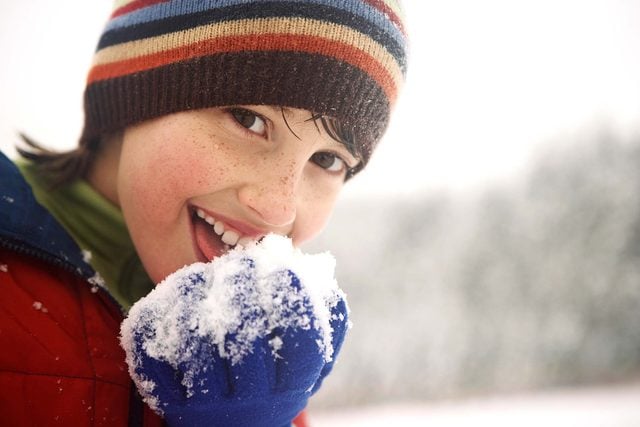The Scary Reason You Should Never Let Your Child Eat Fresh Snow
Updated: Feb. 09, 2017
Think twice before catching flakes on your tongue.

We all know how bad it is to eat yellow snow—actually any sort of colored snow is probably a bad idea. But what about the fresh white stuff?
It depends on how “fresh” the snow is. A 2015 study out of McGill University in Canada showed that snow in urban areas can turn toxic, thanks to air pollutants from car exhaust.
Researchers pumped chemicals found in vehicle exhaust into a sealed chamber of freshly collected snow. After one hour, the snow had absorbed these hazardous chemicals, including BTEX compounds (benzene, toluene, ethylbenzene, and xylene) found in petroleum products. Low levels of exposure to BTEX can cause headaches, dizziness, and confusion, but long-term exposure and directly ingesting high levels of BTEX can lead to cancer, complications in the liver and kidneys, and even death.
Lead researcher Parisa Ariya, PhD, a professor of chemistry and atmospheric and oceanic sciences at McGill, is adamant that her kids don’t eat snow in an urban setting. She says it’s just not logical to eat snow—even falling snow—in a heavily populated area, especially when you can see exhaust leaving vehicles.
Rural areas are a different story. When there are fewer cars releasing fewer air pollutants, you’re safe to catch flakes on your tongue and scoop them into your mittens. However, if you live near a factory or another source of air pollutants, play it safe and avoid putting snow in your or your kids’ mouths.
“I don’t want to be an alarmist,” Ariya says, recognizing that eating snow is a beloved activity for the young and the young-at-heart. More studies need to be done to see exactly what happens after pollutants mix with the snow. For all we know, some could be released back into the air. But for now, it’s best to skip the all-natural snow cones.